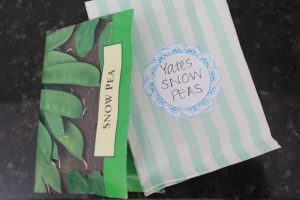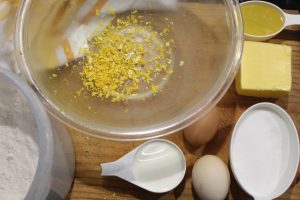planting

I like growing food. I have lots of herbs in pots and also spring onions. (They add colour and flavour to many things and grow well in pots.) I have a passionfruit vine and two blueberries and a lime tree. Now I have planted snow peas. We like them raw, steamed and in stir fries. The problem is the river rats like them, too, so I grow them in cages. Not the ideal look for a small garden but necessary to make sure we get some to eat, too.

Had a good sort through the seed tin and left out the snow pea seeds to plant. Soaked the seeds overnight in water to soften the outer skin. Then I planted them about 2cm deep in well prepared soil. I grow them in a small raise bed to slow down exploring rats. Covered the raised bed with a cage.

Snow peas (mange-tout) germinate after about ten days. They take between 8-12 weeks from planting to picking and are ready when the pods are still flat with no apparent development of the pea. They are ready to pick about 10 days after flowering. Snow peas can be grown in Western Australia all year but don’t like temperatures over 30°C. They also enrich the soil with nitrogen.
reading
I am reading a lot at the moment and enjoyed three books this week. The first was Emily Brugman’s The Islands, a fictional account of Finnish immigrants to Australia in the 60’s who end up as cray (lobster) fishermen on Little Rat Island, part of the Abrolhos archipelago off the West Australian coast. The Islands are most famous for more than 60 ship wrecks, the best known being the Batavia (1629) and The Zeewijk (1727). Brugman touches on the ongoing exploration of the wreck sites and the relics retrieved.
Brugman’s story refers to the wrecks and ghostly sightings, but also the isolation, aridity and sun bleached coral environment, the plentiful crayfish and the clear, blue waters. References throughout to their assimilation within Australian culture are based on the author’s family. This is Brugman’s first novel. It is well written, interesting and engaging.

The second book was Julie Mayhew’s Little Nothings, a novel about four women, their families and their friendships. Competition, envy, money and alcohol are the constants in this story but it is well written. This is about the power of group dynamics and how hard it can be for some women to break free from those confines. I think Mayhew is a keen observer of human behaviour!
The third book I am really, really enjoying is published by Taschen, called Japanese Woodblock Prints. This book covers the evolution of this art form from 1680 to 1938 and is richly illustrated. I really like Japanese woodblock prints and the influence this style had on European artists. Although I have read books before about woodblock printing and even done a course and made and printed my own blocks, reading about the history and the complexity of becoming a woodblock artist is fascinating. This style is uniquely Japanese.

Library of Congress image.
When exports from Japan began arriving in Europe in 1880 after a 200 year trade block, Europeans were introduced to this unique style of representation. Called ukiyo-e (the pleasures of life) a word derived from the Buddhist word ukiyo, meaning floating world, it refers to art produced in Japan between the 16th and 19th centuries. Although most of the Impressionists admitted to being influenced to some degree by this style, Manat and Van Gogh were both keen followers. Van Gogh particularly admired the use of simple, well chosen lines to tell an entire story. Degas was a keen collector of Japanese ukiyo-e prints and acknowledge their influence on his work. Toulouse Lautrec was also a great admirer and the influence of the Japanese style is evident in his famous posters.

Library of Congress image
Woodblock prints typically represent a fantasized view of Japanese culture over three centuries. Landscapes, fantastical demons and other torments, kabuki actors, sumi wrestlers, courtesans and animals all feature along with a surprising amount of erotica. This book has all the well known artists, such as Hokusai, Hiroshige, Kunisada and Yoshitoshi along with many lesser known artists. Rich with beautifully reproduced prints and information I’ll be returning to it for some time.

Library of Congress image
cooking
Citrus season has begun in Western Australia. Citrus are a versatile fruit which can be generally eaten raw or cooked, in savoury and sweet dishes, juiced, grated and sliced and also used as decoration. Citrus looks good, smells good and tastes good! The fruit is packed with vitamins and minerals and is high in fibre. Citrus, in its many forms, is evident in the cuisine of most countries.


I have a lime tree and generous neighbours, who happily share their fruit. I was given some oranges and had access to kumquats so knew it was time to make an Orange Cake With Candied Kumquat.


This week we celebrate our 38th Wedding Anniversary. We’re not going out unless it’s necessary since the border between WA and the rest of Australia opened and CV exploded here. So, a roast dinner, coffee and cake to celebrate!




